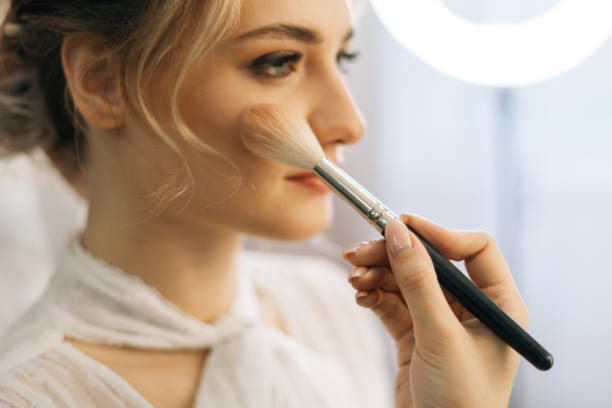Full disclosure: I am the proud owner of a shiny, tanned T-zone at the end of each day. Setting is the act of applying makeup to your face. I use either a powder or spray (typically powder) to keep it in place. If I don’t use setting makeup, the beauty I have created ends up melting on my skin. Onomie’s AHA and Onomie’s Perfecting Setting Powder are my current go-to powders. Onomie’s Perfecting Setting Powder ($30) and Laura Mercier’s Translucent Setting Powder ($23), make it easy to keep my makeup on the go. To set my face when I feel particularly oily or to make sure my makeup lasts, I love Black Opal’s Soft Velvet Finishing powder ($10).
Although I cannot stress enough how important setting powder is (especially for oily people), I don’t usually apply it to my entire face. I just use it in the areas that are most noticeable, like under my eyes and along my nose. I also dust my forehead lightly to reduce shine. Sarah Lucero from Stila’s global executive director for creative artistry, says that setting your makeup is about keeping it looking flawless for as long a time as possible. It’s like using a last mist of hairspray on your hair to keep it in place. For more information on setting powder, including best practices and how to use it, keep reading.
What is the difference between setting spray and powder?
There are some key differences between setting sprays and powders, aside from their different consistencies. Setting powders are usually used as the last step in applying foundation or concealer. Sprays are used to seal all makeup. Ashleigh Ciucci, makeup artist, says that a setting spray is a mist that contains a polymer (or bonding agent) and which when applied to the skin sticks to your makeup. “A spray can remove any [overly] matte finish, making the skin look more natural,” says Ashleigh Ciucci, makeup artist.
Spraying your entire face with something can be too much work. A setting powder might be a better option, especially if your skin is combination or oily. Ciucci says that setting powders contain ingredients such as talc or silica. They help to keep wet products (such as cream foundations, concealers, and liquids) in place and prevent excess oil production. For clients who prefer a natural look, she recommends using a setting powder such as Nars Light reflecting Loose Powder ($37). Setting sprays can sometimes feel stiff or sticky, even though they may appear more natural.
Here are some tips and tricks for setting up products.
Lucero applies loose powder to her clients’ makeup using a small brush, or makeup puff. This makes it easier for her to control the powder’s location. She says that she prefers to apply the powder in an upside-down ‘v’ shape. This places the powder on the forehead, sides of the nose, mouth, and chin. Then, press and roll a powder brush across the area. “Strategic powder placement has never been more popular!” Lucero explains, “Strategic powder placing is more modern!”




